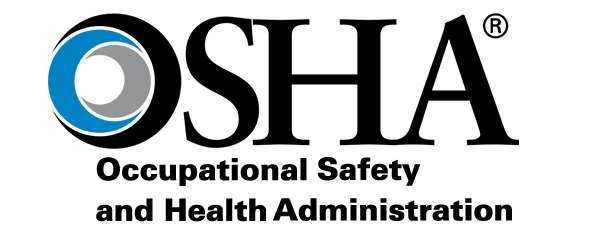
Through OSHA, employers have a responsibility to provide a safe workplace environment for workers. As reported, despite annual progress in workplace safety, recurrent violations continue to occur. Analyzing these patterns can assist in recognizing trends and introducing effective solutions and programs to prevent the recurrence of workplace hazards.
Ensuring compliance with Occupational and Environmental Health and Safety (OEHS) regulations at the federal, state, and local levels is a complex responsibility for businesses of all sizes. The intricate web of requirements and regulations can make it challenging and overwhelming. Failing to comply with these regulations may result in severe consequences, such as substantial fines and civil penalties, heightened insurance premiums and liability, employee injuries or fatalities, exposure to lawsuits, and the potential downfall of a business.
The Occupational Safety and Health Administration (OSHA) announced its most frequently cited workplace safety standards for fiscal year 2023. Fall Protection – General Requirements continues to be at the top of the list for the 13th year in a row. The annual list, based on worksite inspections, aims to alert employers and safety professionals to common violations to help prevent them.
OSHA’s Top 10 Safety Violations for FY 2023:
- Fall Protection – General Requirements (1926.501): 7,271 violations in 2023
- OSHA fall protection regulations aim to prevent injuries by establishing guidelines for employers to protect workers from falls in the workplace. This includes the use of guardrail systems, safety nets, toe-boards, and other measures to mitigate the risk of falling from elevated surfaces.
- Hazard Communication (1910.1200): 3,213 violations in 2023
- OSHA Hazard Communication states that employers must inform and train employees about the hazardous chemicals they may be exposed to in the workplace. This includes maintaining a comprehensive chemical inventory, labeling containers appropriately, and providing access to safety data sheets to ensure workers are aware of potential hazards and can handle chemicals safely.
- Ladders (1926.1053): 2,978 violations in 2023
- OSHA Ladder regulations outline safety standards for the design, use, and maintenance of ladders in the workplace to prevent falls and injuries. These standards encompass proper ladder selection, inspection, and usage, emphasizing stability and secure anchoring to ensure the safety of workers when using ladders.
- Scaffolding (1926.451): 2,859 violations in 2023
- OSHA Scaffolding regulations establish safety requirements for the construction, use, and maintenance of scaffolds in workplaces to prevent accidents and injuries. These standards cover aspects such as scaffold design, assembly, and employee training, ensuring a secure and stable platform for workers at elevated heights.
- Powered Industrial Trucks (1910.178): 2,561 violations in 2023
- OSHA Powered Industrial Trucks standards govern the safe operation of forklifts, pallet jacks, and other powered industrial trucks in the workplace. These regulations include training requirements for operators, maintenance guidelines, and safety measures to prevent accidents and injuries associated with the use of such equipment.
- Lockout/Tagout (1910.147): 2,554 violations in 2023
- OSHA Lockout/Tagout regulations mandate procedures to control hazardous energy sources during maintenance or servicing of machines and equipment. This involves isolating the energy sources, locking or tagging out equipment, and ensuring proper verification processes, preventing unexpected machinery startup and safeguarding workers from potential injuries.
- Respiratory Protection (1910.134): 2,481 violations in 2023
- OSHA Respiratory Protection standards require employers to establish and implement a respiratory protection program to safeguard workers from inhaling hazardous airborne contaminants. This includes the proper selection, use, and maintenance of respirators, as well as providing necessary training to ensure effective respiratory protection in the workplace.
- Fall Protection – Training Requirements (1926.503): 2,112 violations in 2023
- OSHA Fall Protection Training Requirements states that employers provide training to workers who may be exposed to fall hazards. This includes instructions on recognizing fall hazards, proper usage of fall protection systems and equipment, and understanding the procedures for minimizing the risk of falls in the workplace.
- Personal Protective and Lifesaving Equipment – Eye and Face Protection (1926.102): 2,074 violations in 2023
- OSHA’s Personal Protective and Lifesaving Equipment standards for Eye and Face Protection mandate that employers provide appropriate protective gear to shield workers from eye and face hazards. This includes safety glasses, goggles, face shields, or other devices designed to protect against specific workplace risks.
- Machine Guarding (1910.212): 1,644 violations in 2023
- OSHA’s Machine Guarding standards involve the implementation of protective barriers or devices on machines to prevent workers from coming into contact with moving parts, thereby reducing the risk of injuries such as amputations or crush injuries. The goal is to create a safe working environment by effectively shielding workers from potential hazards associated with machinery.
Occupational and Environmental, Health and Safety (OEHS) is an important component of all businesses, no matter the size. RHP Risk Management’s team of Certified Industrial Hygienists (CIHs) and Certified Safety Professionals (CSPs) industry experts will work with individual business needs to implement new EHS strategies that work for you. RHP will work with you and your business to create personalized workplace safety solutions by assessing your businesses distinctive occupational hazards such as occupational exposure and hazard assessments, noise assessments, respiratory protection and PPE assessment services, regulatory compliance assessments, etc. We generate meaningful and actionable insights from quantifiable data to address and mitigate these hazards. Our on-site EHS experts implement, train, and audit the effectiveness of the recommendations. We ensure the plan aligns with OSHA, ANSI regulatory authority requirements, and NIOSH recommendations. Additionally, we conduct facility audits to identify any gaps in the existing EHS program, develop a comprehensive training program covering all safety and health aspects of your facility, and establish ongoing EHS support to meet your business’s specific needs.
Contact RHP by calling (773) 867-6010.
